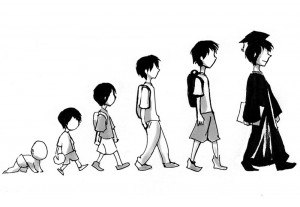Reforms to No Child Left Behind are positive
President Barack Obama visited the students of Benjamin Banneker Academic High School in Washington D.C. last Wednesday to deliver his annual back-to-school speech, with one definitive message: Keep going to school. Don’t just finish high school; go to college. And once you’re there, graduate and get a college degree.
This speech closely paralleled the goal of the controversial No Child Left Behind Act.
In theory, by enacting federal academic requirements that states must meet annually — all of which are based on teaching-to-the-test type standards — the government will help high school students become college and career ready.
But is this really the right message to send to schools? Measuring educational growth and success based on standardized test scores is antiquated and has set a very harmful standard for what is considered valuable in education.
Though No Child Left Behind doesn’t directly impact university-level education, its focus on tests and statistics does.
According to No Child Left Behind, 4,000 California schools are currently “failing.”
Luckily, Obama has recognized No Child Left Behind might be what’s really failing.
Last week Obama lifted the 2014 proficiency deadline — a provision that called every state to set standards in reading and math to be met by 2014 — for states that agree to adopt his administration’s new academic standards.
States can now apply for waivers from some of the law’s provisions and replace them with standards of their own design.
These changes allow for much more flexibility when it comes to measuring student progress and creating teacher evaluation systems.
Most importantly, they open a door for states to shift away from data-driven achievement and toward genuine reform.
There’s no way for high schools to throw out standardized testing altogether or for colleges to stop giving out grades, but with the changes made last week, the next step California takes with the revised law will set an important tone for the state’s education system at every level.
According to No Child Left Behind, standardized test scores are expected to rise every year.
Schools that don’t meet those standards are branded as “failing” and face even more federally imposed requirements and sanctions.
School reform is not motivated or supported in the correct way. Instead, further rigidity is applied as well as a heavy pressure to teach to the test.
Student progress and teacher evaluations shouldn’t be about numbers or meeting requirements.
Neither should the idea of a good school. A good school is about people, interaction, stimulation and creativity.
There is an admitted strength in the reliability of statistics and data, but it cannot define schools.
Some states have already applied for waivers, but California’s decision remains to be seen.
The state should avoid jumping through even more hoops to meet the waiver’s conditions and just keep following NCLB.
There is no requirement or money lost if California doesn’t apply for the waiver.
What the state would lose, however, is a crucial opportunity for it to take its schools in the right direction. It also demands a level of flexibility that schools will only get closer to achieving through the waiver.
In a New York Times article reporting on Obama’s removal of No Child Left Behind’s “most onerous provisions,” Jack Jennings, president of the Center on Education Policy, suggested “This is the beginning of the end of the No Child era.”
Hopefully it is the beginning of the end of test-driven reform.
The changes to No Child Left Behind have brought a necessary spotlight to education reform in California.
It is now up to the state to address its own flaws, take advantage of the waiver system and move forward.
Elena Kadvany is a senior majoring in Spanish. Her column “Beyond the Classroom” runs Mondays.


Comments are closed.